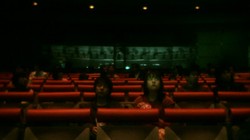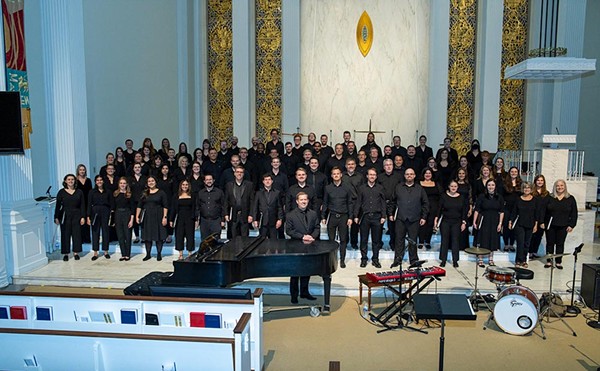When word came down from Japan a few weeks ago that more than a half dozen movie theaters, particularly in the Ginza and Asakusa districts, would be shutting down within the next few months it made my heart hurt. Though the theaters -- which seem to be mostly specialty theaters, focusing on art house, pink film, and repertory screenings -- are not theaters I've ever been to or likely would ever be able to get to visit, I know people through a Japanese film mailing list who have been to many of them. It's a similar sense to feeling your own mortality when a friend of a friend dies. You're not connected to it really, but you feel for the friend and worry about it yourself.
The original articles, from The Daily Yomiyuri and Tokyo Web, were translated by Michael Arnold, a pd.D candidate in Asian and Screen Studies at the University of Michigan, who wrote to me to add:
I have been to Cine Pathos (Shine Potasu) in Ginza,the two Pink cinemas in Asakusa, and the Pink theater
in Yokosuka (and many other Pink and non-Pink theaters
in Japan), but I haven't yet been to the remaining
three (non-Pink) Asakusa theaters that are also closing.
The focus of my dissertation is adult cinema, so I have
done most of my research at adult theaters.
It is hard to make generalizations about Pink theaters in
Japan because there are still quite a few of them and they
come in all shapes and sizes. Some Pink theaters are neglected
and run-down, others are very clean and well-maintained. Some
Pink theaters have broken seats, sticky floors, and low-quality
analog video projection, but others have very comfortable
seats, sparkling-clean floors, and huge screens with expert
35mm film projection. Many fit in somewhere between those
extremes. Regardless of the condition, I'm very sad to see
these venues close because they often have a long history and
many loyal customers, and because they tend to facilitate a
unique space for social and cinematic interaction that is
hard to find anywhere else in Japan (or even, I imagine,
in the world).
Pink film is hard to describe. It's an acquired taste, one which doesn't really suit me personally, but is one of the most popular genres in Japan. Pink film had a cult following around the world, though the only Pink film I can remember getting any play at American festivals and special screenings is The Glamorous Life of Sachiko Hanai, which began life under the title Horny Home Tutor: Teacher's Love Juice (which I really hope sounds better in the original Japanese). It's difficult to describe because it could most readily be called porn, but just calling it porn misses the point entirely. The Glamorous Life of Sachiko Hanai is about a call girl who is shot in the head while witnessing a dispute between two spies over the cloned finger of George W. Bush, who wakes up from the ordeal with special brain powers. Porn doesn't even have a set up anymore. Karl Hungus wouldn't have to pretend to be the cable guy if he were still acting for Jackie Treehorn. At least it would be less exhausting.
Over the years, we've been hearing about how well Japanese film has been doing, even in its competition against Hollywood for the moviegoing yen. Along with South Korea and India, it's been one of the domestic film industries that regularly kept a better than 50% share of the total box office. But after interviewing Ichiyama Shozo, the program director of FILMeX, Mark Roberts, a freelance film writer living in Japan, found out that number may be fudged:
The overall numbers may look higher becausethese include very small, low-budget films that
are released on video or only show in cinemas as
a late show screening or something, films which
cannot really have commercial success.
Many people now are trying to make films by themselves,
and there are many theaters looking for films. I think
there may be too many theaters in Japan now. But
they will show small, independent films even if
there is almost no audience or commercial potential,
and filmmakers can also pay money for the cinemas
to keep the screens. So probably the overall numbers
are because of the many small films, or those produced
by DVD companies. The latter don't expect any revenue
from theaters. They show the film in a theater for one
week or something, before they release it on DVD.
Mark highlighted Shozo's point that distributors "can also pay money for cinemas to keep the screens" in Japan, something artists have been doing for years, he says.
Of the closing theaters, the Ginza Shrine Potasu seems like the biggest loss to me, as it sounds exactly like the kind of cinema I would dream about, almost a subterranean paradise for film nerds. You can read a little bit about on Aaron Gerows's blog, Tangemania. It has the feeling, from reading Aaron's words and seeing his pictures, sort of like the Angelika in New York, which is mostly underground, but you enter the Angelika through a spacious coffee shop and then take an escalator below to an array of very long, narrow theaters. It's difficult to not be romantic about a theater like the Shine Potasu, though as I said, I've never been there. Mark Roberts has been there though, and visited a few of the closing theaters recently:
I think I will also miss Ginza Pathos the most, as ithad a pretty good program, was literally underground,
and was the one that I visited more.
Since they will soon close, I recently visited the
Asakusa Meigaza and Shingeki. The Meigaza was actually
a bit more tidy than memory served, though the seats all
had clear plastic covers that weren't ideal in summer
weather. The Shingeki was much livelier, with old guys
chattering, clearing their throats and groaning throughout
the screening. People were shuffling in and out constantly.
I saw a young couple who seemed to be on a date (and they
stayed!).
Afterwards, one of my friends remarked that this ambiance
might actually be closer to that of theaters in the past,
while the contemporary rule of silence we now take for
granted came later.
Certainly in America, the original movie theaters were cheap, light entertainment for the poor and working class, and there was no need for silence, especially since the films were only accompanied by a live piano, if anything at all. Silence was for the theater, where the upper classes got dressed up to go. At a certain time in France it was considered bad manners to clap or cheer at the end of a performance. The silence for films came with sound, though I've never heard of a landmark to date it by. I'm sure it had something to do with the emergence of the big studio-owned movie houses in New York City that sat thousands of people who all dressed up for a night out. Besides, it's only a certain kind of noise that's bothersome. Cheering, clapping, laughing, anything that shows you are engaged in the film, is fine by me.
Whether Japan or America, it's really been a long time since there was a positive piece on movie theaters in the press. It's all doom and gloom time for the cinema. Fans of the modern cinema experience are being aggressively pushed out of the place they love as theaters have become overrun by the other kind of theater noise and rudeness by people who have no respect for the charm or sanctity of theatergoing. It's a disagreement between two segments of society, one who thinks of the theater like a church, the other who treat it like their living room. Of course it's not a new problem -- it's actually a problem that's been around since before there were movie theaters, when movies were just shown in Vaudville shows -- but it does seem worse over the last few years, as cell phones and their brights screens become more prevalent. They've basically become ubiquitous now, and their little screen automatically draw the eye away from the movie whenever one pops up. Something will give eventually.



















